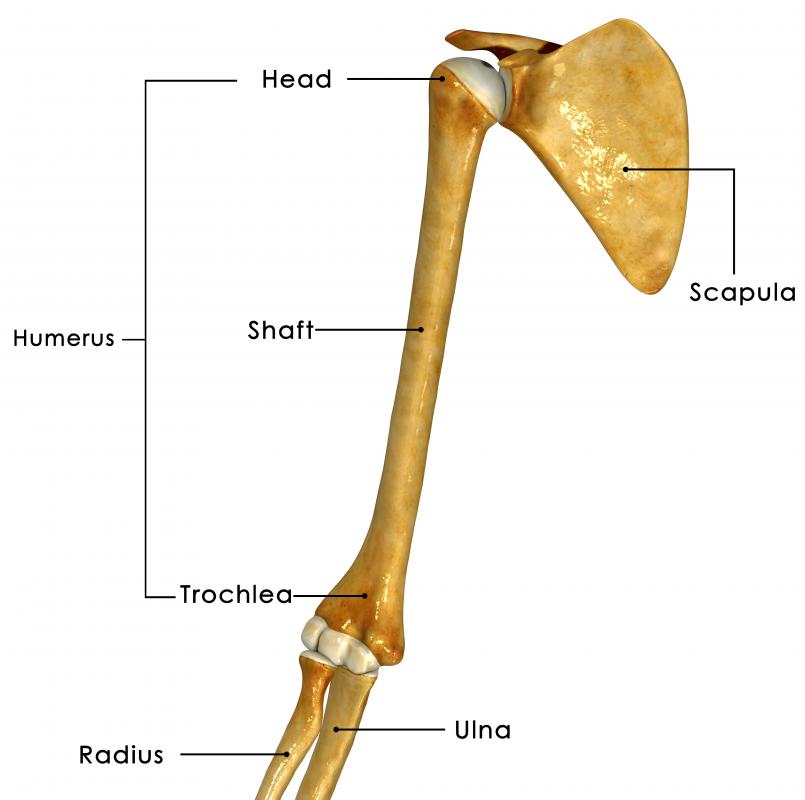At WiseGEEK, we're committed to delivering accurate, trustworthy information. Our expert-authored content is rigorously fact-checked and sourced from credible authorities. Discover how we uphold the highest standards in providing you with reliable knowledge.
What Is the Coracohumeral Ligament?
The coracohumeral ligament is a flat band of connective tissue that stretches across the front of the glenohumeral, or shoulder, joint. It links the top of the humerus, the bone in the upper arm that is held in the shoulder joint, to the coracoid process of the scapula, a projection of the shoulder blade. Along with several other ligaments of the shoulder, the coracohumeral ligament holds the bones together, as well as provides stability to the shoulder joint.
Found at the top of the arm where the head of the humerus bone meets a socket in the shoulder blade called the glenoid fossa, the shoulder joint is classified as a ball-and-socket joint, a joint type that allows a broad range of motion. As such, many ligaments surround and cross this joint to hold the head of the humerus in the glenoid fossa, allow the arm to move in multiple directions without coming loose from the socket, and support the weight of the arm. Some, like the coracohumeral ligament, connect the humerus directly to the shoulder blade, while others connect the shoulder blade to the collarbone or the various projections of the shoulder blade to one another. This ensures maximum stability for the joint.

Along the top front aspect of the shoulder blade is a curved bony projection referred to as the coracoid process of the scapula. It can be felt about an inch below the spot where the collarbone meets the shoulder and will feel like a rounded bump. Arising from the lateral or outermost border of this process is the coracohumeral ligament, which crosses the anterior or front side of the shoulder joint horizontally, angling slightly downward as it goes.

Consisting of tough, collagen-based fibers that widen as they approach the top of the arm, the coracohumeral ligament attaches to the top of the humerus on its anterior side on a surface known as the greater tubercle. The greater tubercle is the curved outside portion of the top of the humerus, whereas the rounded inside portion that inserts into the shoulder joint is known as the head of the humerus. In other words, the coracohumeral ligament crosses the front of the shoulder and inserts at the top outside portion of the upper arm, just below the peak of the shoulder.
The amount of force applied to the ligaments of the shoulder joint depends on the position of the arm relative to the shoulder. For example, the coracohumeral ligament is most significant to shoulder stability when the arm is fully adducted, meaning that the arm is hanging at one’s side when standing upright. In this position, it bears a substantial portion of the arm’s weight and resists the downward slipping of the humerus in the fossa as the arm hangs downward.
AS FEATURED ON:
AS FEATURED ON:












Discuss this Article
Post your comments